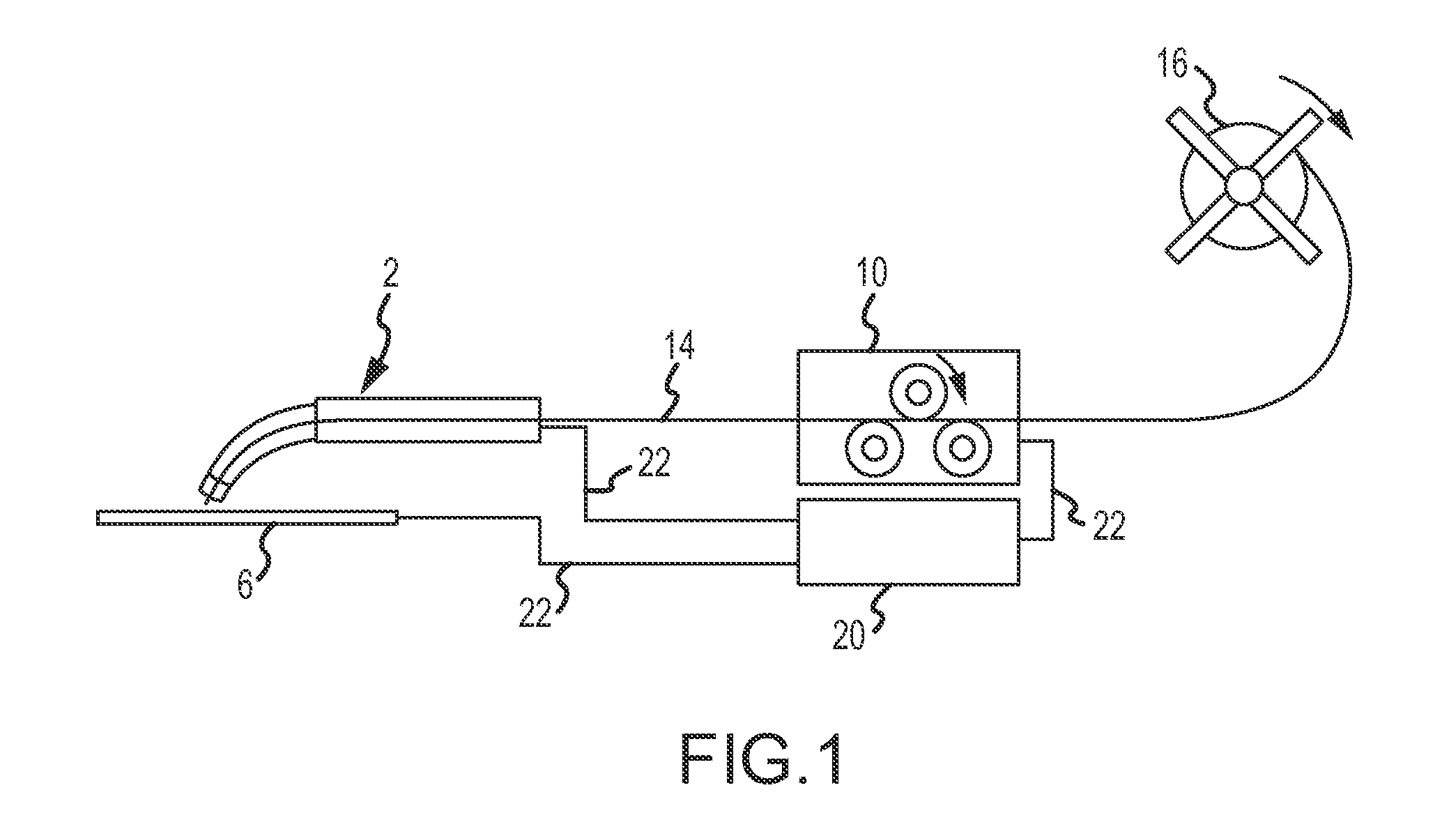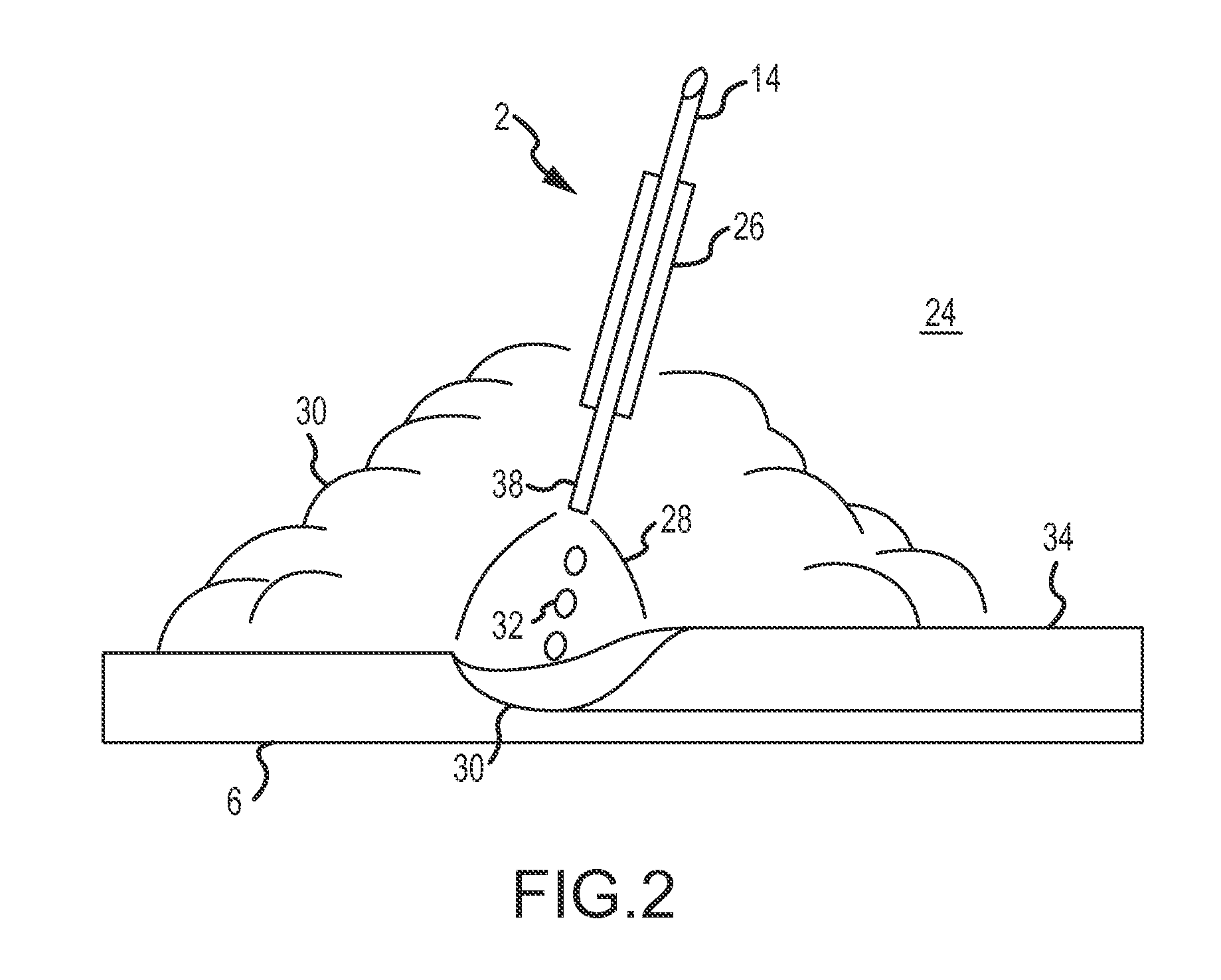In-service weld repairs using metal arc welding under oil (MAWUO) of pipelines, tanks, and vessels
a technology in-service welding, which is applied in the field of metal arc welding, can solve the problems of ineffective radio communication of steel pipelines, severe restriction of pipeline flow diameter, and inability to direct communication with smart pigs, etc., and achieves the effects of reducing the amount of debris generated by the welding process, low porosity, and sufficient hardness
- Summary
- Abstract
- Description
- Claims
- Application Information
AI Technical Summary
Benefits of technology
Problems solved by technology
Method used
Image
Examples
example 1
[0072]Experiments were conducted according to the test setup depicted in FIG. 10 using steel electrode wires. Voltage, current, wire feed, and linear actuator speed were varied, and the resulting weldments were analyzed to determine if the weld properties met AWS standards. The parameters are summarized in the following table.
TABLE 1Experiments Using ER70S-6 Steel WiresLinear ActuatorWire FeedCurrentWeld SampleSpeed (in. / min.)(in. / min.)Voltage (V)(Amperes)12.882052611424.322002811934.322002812644.322302821754.82303319067.22002015077.22002310987.22002618397.223026180107.223030187117.220020114127.220030149137.222030168147.221530126157.222032217
[0073]Based on the above parameters, weld samples 8 and 15 were acceptable welds. However, in general, the welds made using ER70S-6 grade filler wire showed a high carbon percentage, a high porosity, and a high hardness.
example 2
[0074]Experiments also were conducted according to the test setup depicted in FIG. 10 using a nickel alloy electrode wire. Voltage, current, wire feed, and linear actuator speed were varied, and the resulting weldments were analyzed to determine if the weld properties met AWS standards. The experiments are summarized in the following table.
TABLE 2Experiments Using ENiFe-2 WiresLinear ActuatorWire FeedCurrentWeld SampleSpeed (in. / min.)(in. / min.)Voltage (V)(Amperes)14.3222026.515624.322602622434.323002621644.323003018454.322603014564.322603014674.323003018184.323503520897.234035223107.236035237117.239035249127.242035264137.242035276147.240035270157.244035279
[0075]Based on the above parameters, weld samples 12 and 13 were acceptable welds. Additionally, in general, the welds made using the ENiFe-2 grade filler wire showed a lower porosity and a lower hardness than the ER70S-6 grade filler wire.
PUM
| Property | Measurement | Unit |
|---|---|---|
| voltage | aaaaa | aaaaa |
| voltage | aaaaa | aaaaa |
| voltage | aaaaa | aaaaa |
Abstract
Description
Claims
Application Information
 Login to View More
Login to View More - R&D
- Intellectual Property
- Life Sciences
- Materials
- Tech Scout
- Unparalleled Data Quality
- Higher Quality Content
- 60% Fewer Hallucinations
Browse by: Latest US Patents, China's latest patents, Technical Efficacy Thesaurus, Application Domain, Technology Topic, Popular Technical Reports.
© 2025 PatSnap. All rights reserved.Legal|Privacy policy|Modern Slavery Act Transparency Statement|Sitemap|About US| Contact US: help@patsnap.com



